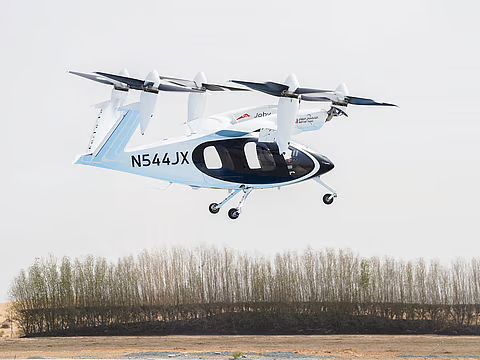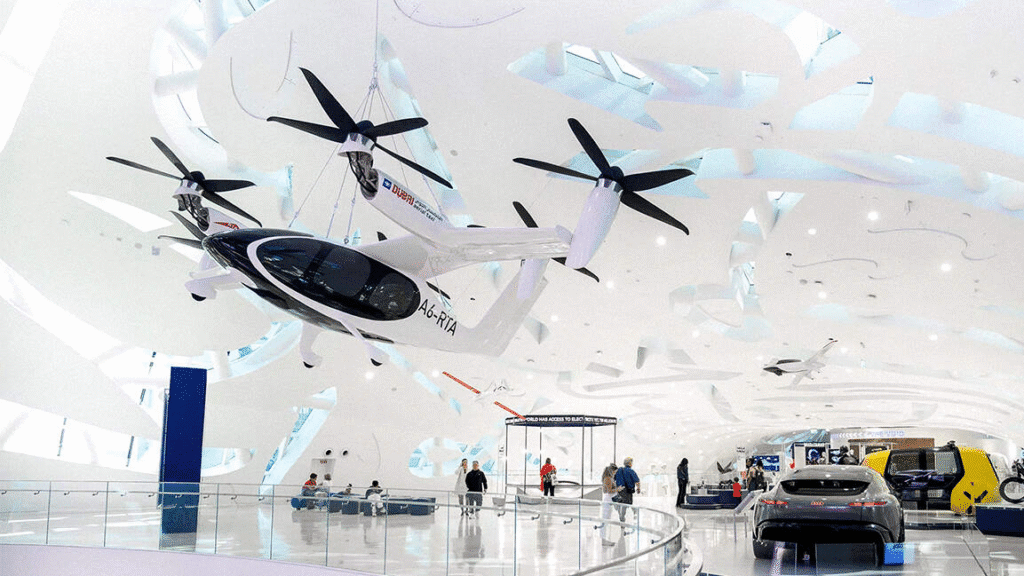Uber Joby flying taxi Dubai launch is set to change the way people travel in the city. The collaboration between Uber and Joby Aviation aims to bring electric flying taxis to Dubai as early as 2026. This move will provide residents and visitors with a faster, cleaner, and more efficient way to move around the city, avoiding traffic congestion while enjoying a unique aerial perspective.
Dubai has always been a hub for innovation, and the introduction of air taxis represents the city’s next step in urban mobility. With Uber integrating these services into its platform, booking a flying taxi could soon be as easy as ordering a regular ride.
Vision Behind the Uber and Joby Collaboration
Uber has long focused on providing convenient, reliable, and diverse transportation options. The partnership with Joby Aviation, a leader in electric vertical takeoff and landing (eVTOL) aircraft, aims to extend Uber’s platform into the skies.

Joby Aviation recently acquired Blade Air Mobility’s passenger business, allowing Uber to integrate helicopter and seaplane services into its app by 2026. This acquisition brings an established infrastructure and a customer base already accustomed to aerial travel.
The integration of air taxis into Uber’s platform will create a seamless travel experience. Users will be able to book both ground rides and air taxis through the same app, simplifying urban travel. Uber’s vision is to combine the efficiency of eVTOL aircraft with the convenience of its app-based ride-hailing service.


The Technology Behind Joby’s Flying Taxis
Joby Aviation’s eVTOL aircraft are designed for urban air travel. These electric aircraft can carry up to four passengers and a pilot at speeds of around 200 mph, covering approximately 100 miles per charge. One of their key advantages is low noise operation, making them suitable for city environments.
Being fully electric, Joby’s flying taxis align with global efforts to reduce carbon emissions. They are quieter and cleaner than traditional helicopters, and integrating them into Uber’s platform represents a significant step toward sustainable urban air mobility.
The aircraft are also equipped with advanced safety systems, including multiple redundant power systems and cutting-edge flight controls. This ensures a safe and reliable experience for passengers while maintaining operational efficiency.
Why Dubai is the Ideal Launch City
Dubai has a strong record of adopting innovative technologies, from autonomous vehicles to AI-driven public services. Its infrastructure and vision for smart urban mobility make it a natural choice for introducing flying taxis.
Joby Aviation signed an agreement with Dubai’s Roads and Transport Authority (RTA) to launch air taxi services in the city. The agreement grants Joby the exclusive right to operate air taxis in Dubai for six years. The RTA will provide support in developing vertiports and financial mechanisms to ease service operations.
Vertiports, specially designated areas for takeoff and landing, will be integrated with existing transport hubs. Key locations will include Dubai International Airport, Downtown Dubai, Palm Jumeirah, and Dubai Marina. These strategically placed vertiports will make air taxis a practical and accessible option for city travel.
Integration with Uber App
Uber’s app integration is crucial for the success of this service. Users will be able to view available routes, pricing, and estimated travel times, similar to traditional Uber rides. The convenience of booking both ground and air travel from a single app will simplify the journey for passengers.
Blade’s previous routes and infrastructure will provide a foundation for the service, ensuring that Uber’s air taxi operations can scale efficiently. The app will also provide real-time updates and notifications, making the air travel experience smooth and predictable.
Uber plans to gradually expand the service within Dubai, starting with high-demand routes before adding more vertiports and destinations. This phased approach ensures reliability while building public confidence in urban air mobility.
Global Expansion Plans
While Dubai will be the first city to launch Uber Joby flying taxis, global expansion is already on the roadmap. Cities like New York, Los Angeles, Tokyo, and London are being considered for future operations.
By leveraging Blade’s infrastructure and Joby’s technology, Uber plans to extend its air taxi services to multiple urban centers. This expansion could revolutionize city transportation worldwide, making air taxis a viable alternative to congested roads.
The long-term vision includes a fully integrated mobility system where ground and air travel complement each other. Passengers could choose the fastest route from point A to point B, whether it involves a traditional car, e-bike, or a flying taxi.

Potential Benefits for Passengers
Passengers stand to gain significantly from the introduction of flying taxis:
- Time Efficiency: Avoid traffic congestion and reduce travel time between key locations.
- Environmental Impact: Electric-powered aircraft reduce carbon emissions and contribute to sustainable urban mobility.
- Convenience: Integration with the Uber app simplifies booking and planning journeys.
- Accessibility: Vertiports in prime city locations make air taxis easy to access.
- Unique Experience: Aerial views of the city provide a novel and enjoyable travel experience.
Flying taxis also have the potential to complement public transport by providing faster connections between transport hubs, airports, and business districts.
Challenges and Considerations
Despite its promise, urban air mobility faces challenges:
- Regulatory Approval: Ensuring safety and compliance with aviation authorities is critical.
- Infrastructure Development: Vertiports must be efficiently integrated into existing urban landscapes.
- Cost: Initially, flying taxis may be priced at a premium, limiting accessibility for all passengers.
- Public Adoption: Educating the public about safety and benefits will be necessary to encourage adoption.
Uber and Joby are actively working with authorities and stakeholders to address these challenges and ensure a smooth rollout of services.
The Future of Urban Air Mobility
The Uber Joby flying taxi Dubai launch marks a significant step toward mainstream adoption of urban air mobility. It represents a fusion of cutting-edge technology, sustainable transportation, and modern urban planning.
Dubai’s early adoption could serve as a model for other cities worldwide. As public confidence grows and technology becomes more affordable, flying taxis may become a common sight in urban skies.
By integrating these services into an existing platform like Uber, the transition to aerial travel becomes practical, accessible, and user-friendly. The success of this initiative may redefine how cities approach transportation and urban mobility in the coming years.
Conclusion
The Uber Joby flying taxi Dubai launch is poised to revolutionize urban travel. By combining Joby Aviation’s electric aircraft with Uber’s seamless app integration, residents and visitors will have access to a faster, cleaner, and more efficient mode of transportation.
Dubai’s smart city vision and strategic infrastructure make it the ideal launchpad for urban air mobility. With the first flights expected by 2026, the city is set to become a global leader in aerial urban travel.
As this technology evolves, it could transform not only Dubai but cities worldwide, bringing the dream of accessible, sustainable, and efficient air travel closer to reality. Urban mobility is entering a new era, and flying taxis are leading the way.
Do follow UAE Stories on Instagram
Read Next – TruEstimate Powers Half of UAE Property Deals, Bayut Confirms














